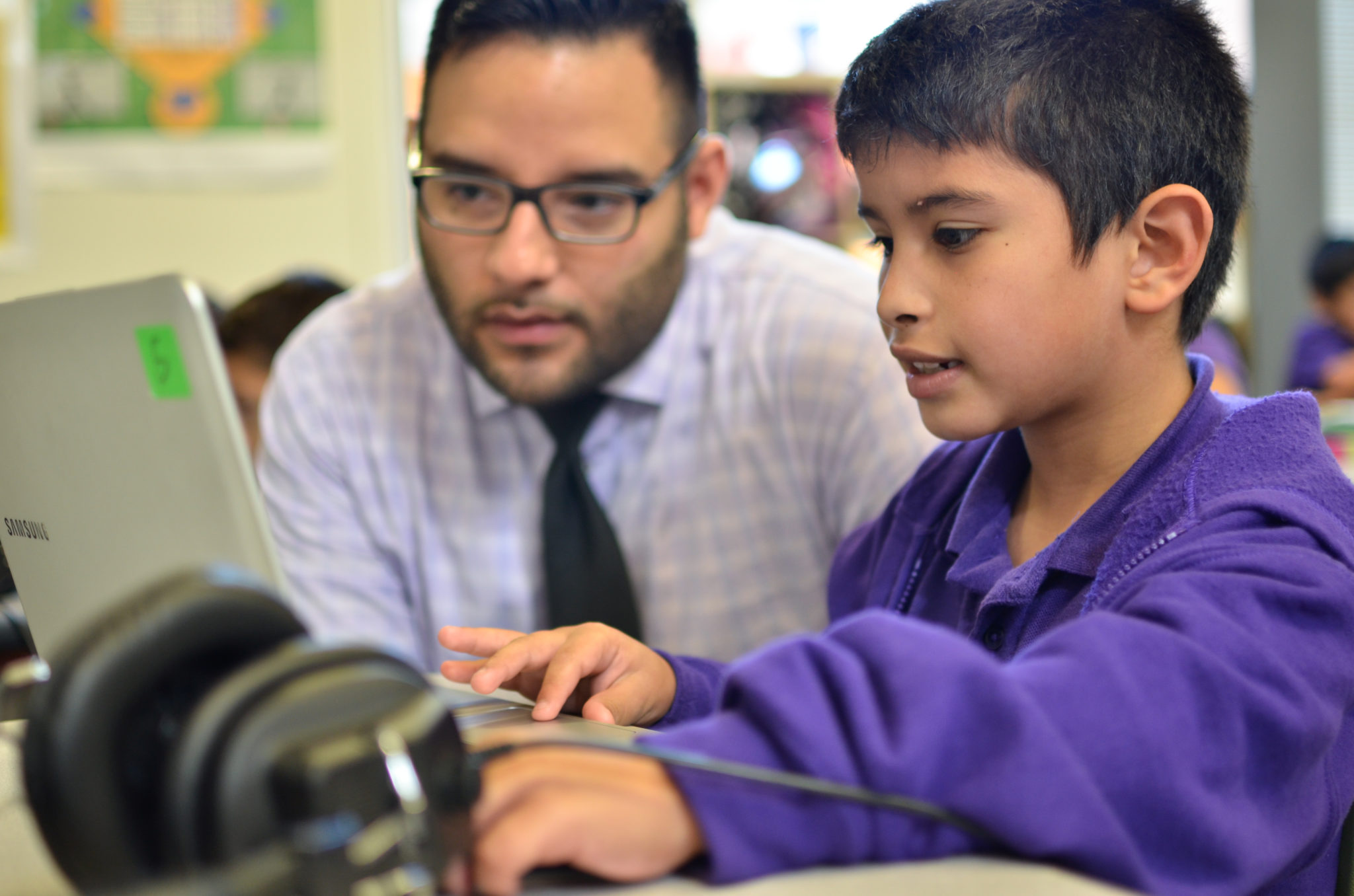
How Data Drives Personalized Instruction in My Class
by Stephen Pham, Teacher, Sí Se Puede Academy
There’s no doubt that teaching is overwhelming. Educators are responsible for the academic achievement of anywhere between 15 to 150 children, all of whom start the year at different levels and learn in very different ways. Furthermore, as many education experts are saying, the tired, old school model of pushing kids through a one-sized-fits all factory-like system, moving through grade levels as if in different stages of production, is failing to meet the individual needs of our youth.
Thus, many educators, including myself, are leveraging new-age technology to help give students personalized learning so that each student gets what they need to be successful. In order to track progress and monitor both the mastery and needs of each student, we use data produced from online learning programs and assessments to create a robust database of information from which we can plan. Data thus facilitates personalized instruction, allowing teachers to design individualized practice, teach to the needs of students and support each student in their personal progress. Ultimately, using data wisely makes the teaching career and practice of personalized learning sustainable.
In my classroom, I leverage data to inform my instruction in many ways. I pull data from everyday practice in online learning programs and more infrequent assessments such as formative and summative assessments. Organizing and making all of this data meaningful is key to my instructional practices.
Balance a suite of online learning programs.
Just as teachers spend time vetting through different curricula and worksheets to give their students, I’ve spent significant time testing and finding the best online programs for my students. Ultimately, I’ve found that no one program succeeds in meeting all of our class’ needs. Instead, it’s helpful to have a suite of programs that provide various types of practice in different modalities. These programs are presented to students in a strategic way, balancing targeted practice as well as broader practice that remediates and previews content.
Differentiate practice much more easily.
Rather than spending countless hours searching through worksheets that address various levels of rigor for the same skill, teachers can easily find differentiated practice online. Many programs adapt to a student’s performance, reducing the rigor and backfilling or increasing the rigor, as needed. Alternatively, many programs are simply self-paced, allowing students to progress through and access more rigorous material on their own. Thus, differentiation becomes built in to using online programs, and data from these programs is always fresh and available.
Pull targeted small groups for intervention, reteach and increased rigor.
Through shifting practice to online learning programs, teachers have access to up-to-date data that accurately shows what students need support with. Rather than giving continual assessments, grading, and analyzing data, teachers can use programs that are utilized on a regular basis in class to find the specific students who need a reteach with a specific skill. From there, educators can support a small group in mastering a skill and progressing to the next level in their online programs.
Bring data literacy into the classroom.
One of the most significant shifts in utilizing online instruction and personalized learning is that students begin to own their learning. Students find that they have full control (with the guidance of their teachers) of their achievement. Online programs and their relevant data becomes most powerful when students learn to understand their own data and set goals from the online learning programs as well. By explicitly teaching students to understand their own progress, we shift classroom instruction to become a partnership of learning between the teacher and the student.
Become a coach and facilitate student learning.
In using online programs, classroom interactions shift from direct instruction to more personal, coaching interactions. Teachers serve as coaches, pushing students on their cognitive skills so they have the responsibility and persistence to succeed. With regular celebrations of daily, weekly and monthly progress, teachers become a champion of success. Through using data to facilitate personalized learning, teachers can spend less time differentiating a classroom in class and more time encouraging students to take hold of their learning to reach their academic goals.
In the end, data and online learning programs are still just tools. However, with the right balance of data analysis and teacher planning, classroom design becomes much more effective and personalized. The strong partnership of strategic online practice and teacher moves in class drives the personalized learning that every one of our students deserves.
Follow Stephen on Twitter @stephenqpham.
Stephen is a fifth grade STEM teacher at Sí Se Puede Academy and a STEM Integration Associate for Rocketship’s network Achievement Team. Stephen is also a part of the BetterLesson Blended Learning Master Teacher Project. He grew up in Southern California and attended the University of California, Los Angeles where he studied biophysics. After graduating, Stephen joined Teach for America and has been teaching at Rocketship ever since, now going into his third year. In his practice, Stephen leverages a blended learning approach to teach math and science, getting students to apply their mathematical reasoning in a variety of ways. Stephen lives in San Francisco and enjoys spending time outdoors with friends.
Published on April 9, 2015
Read more stories about: Personalized Learning.


